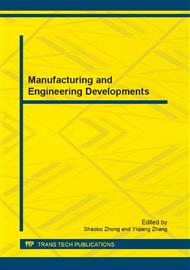p.650
p.654
p.660
p.665
p.669
p.673
p.678
p.683
p.689
Study on Control Strategy for Regenerative Braking of Electric Vehicles
Abstract:
To improve the efficiency of braking energy recovery,a control strategy for braking force distribution was designed.The front and rear wheels braking force were distributed according to the braking intensity,motor characteristics and relevant regulations.A simulation model was created and analyzed for this control strategy on the basis of software simulationX.The result shows that nearly 26% of total energy consumption are recovered effectively under the UDDS cycle on the premise of security and stability.
Info:
Periodical:
Pages:
669-672
Citation:
Online since:
January 2013
Authors:
Keywords:
Price:
Сopyright:
© 2013 Trans Tech Publications Ltd. All Rights Reserved
Share:
Citation:


